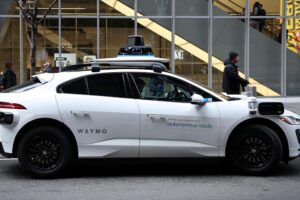Just how entrepreneurial should local government be?
If you think of City Hall as the place where you contest your parking ticket, pay your property tax bill, or buy a pass for the local pool, you may prefer that local elected officials stick to their knitting rather than dabble in outside ventures.
But in an era of strained budgets and a growing skepticism that the private sector always manages public assets more effectively, a creative and enterprising City Hall might be one of the best things that could happen to citizens and public servants alike.
Lancaster, Calif., with a population of about 160,000, about 70 miles north of Los Angeles, may just be Exhibit A for such an approach.
Lancaster touts its “business friendly” atmosphere, but has a median personal income of about $21,000, much lower than the national average. Most residents work in defense or a related industry, including at nearby Edwards Air Force Base.
And, for the past few years, the city has been an energy producer, generating solar power through large panel farms in order to save budget money and raise revenue by selling it to residents, local businesses.
It’s more traditional and less risky to rely on a regulated, private utility, but Lancaster’s appetite for such an unorthodox activity may come from a familiar impulse. Compared to their counterparts in more affluent cities, Lancaster officials have a little more fire in the belly, City Manager Jason Caudle told MarketWatch.

“We’re not a community that has a lot of revenue,” Caudle said. “We’re not high on that list. It causes us to live with scarcity. You’ve got to be creative, entrepreneurial, think a little differently because the citizens don’t give you resources like other communities do. Not every city thinks that way. We have a council that’s willing to take risks.”
Related: Maine wants to take over its private electric utilities. Could other states follow?
Efforts to produce clean energy began as early as 2008, Caudle said, when the city began installing solar panels in parking lots. It took several years of planning and analysis, but in 2014, the city registered with the California Public Utilities Commission as a “community choice aggregator” — the first such entity operated by a municipality. In May 2015, Lancaster Choice Energy (LCE) was up and running.
At first, only municipal buildings were outfitted with LCE power, saving the city a small amount of money. Later, LCE began to sell power to local residents and businesses, generating revenue for the city and saving households about 3% every year compared to power provided by the local utility.
Just as important for some Lancaster residents and officials is the clean-energy aspect of the initiative. The city became one of the first “zero net energy” cities in the world in 2019, meaning it “procures or produces more energy via renewable sources than is consumed within city limits,” according to city literature.
The initiative was profiled in a recent write-up by the Government Finance Officers Association, a national organization made up of state and local professionals. The GFOA noted that Lancaster had “second mover advantage,” in that it didn’t need to re-create the existing power grid, but could simply use the Southern California Edison infrastructure already in place.
“‘You don’t realize what opportunities exist until you get into energy. You don’t know what you don’t know.’”
Still, Caudle and other officials involved in creating LCE and developing that user experience say it was made more challenging because they were the first municipality to do so. In fact, other municipalities have made similar attempts, but abandoned them, in some cases after many years.
They capitalize on that experience by offering consulting services to other communities who want to launch their own energy enterprises.
By charging some city overhead to the revenue-producing LCE, they can also save taxpayers money: $640,000 in 2021, out of a roughly $234 million budget.
“I see myself as the entrepreneurial arm of city government,” said Caudle, who’s been with the city for 13 years. “You don’t realize what opportunities exist until you get into energy. You don’t know what you don’t know. But getting into it allowed us to start exploring a lot of opportunities — everything from transportation to hydrogen HYDR, +0.62% ” — another “greener” energy source that proponents hope will be scalable for cities of all sizes in coming years.





